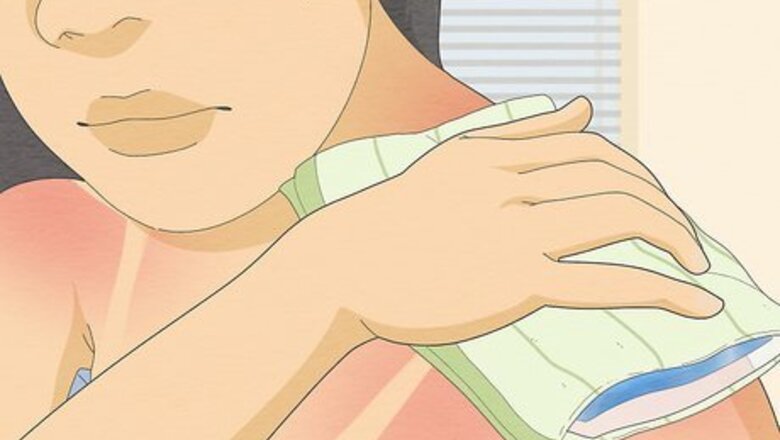
views
- Place a cool compress on your burn or take a cool shower or bath for instant relief.
- Apply 100% pure aloe vera gel or witch hazel to your sunburn to reduce itchiness, alleviate pain, and repair your skin.
- Take an over-the-counter antihistamine (like Benadryl) to suppress itchiness for gradual relief.
Home Remedies
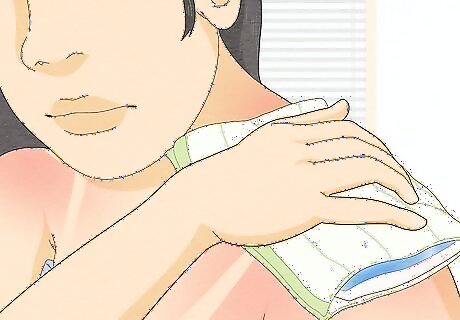
Place a cool compress on the affected area for instant relief. Get rid of a sunburn’s itch almost instantly by applying a cool rag or covered ice pack to it. Run a clean washcloth under cold water, wring it out, and place it over the burn, or wrap an ice pack in a towel to hold to the affected area. As an alternative, take a cold shower or bath (without soap) to relieve large patches of sunburn. Keep in mind that the relief from a cold compress is temporary; however, it can help soothe your mind and the itch.
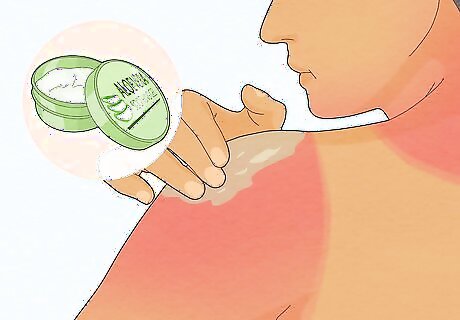
Apply aloe vera to your burn for an immediate cooling effect. Aloe vera is a cooling and moisturizing product that can help heal and soothe skin burns. Use clean hands to gently apply a quarter-sized amount of gel to the affected area. Repeat as needed until your sunburn heals. Ask a friend or loved one for help if your sunburn is in a hard-to-reach spot. Keep in mind that aloe vera cannot prevent sunburns and shouldn’t be used as sunscreen. Always use 100% pure aloe vera gel, as commercial aloe vera products can have harmful chemicals in them that can worsen your sunburn. If you don’t have aloe vera gel, try using a fragrance- and chemical-free moisturizer instead.

Drink lots of water to help heal your sunburn. Staying hydrated is key to relieving sunburn pain quickly. Sunburn can cause dehydration, and drinking plenty of fluids can help your skin stay as healthy as possible. Drink water or electrolyte sports drinks right after getting sunburned, and add 2 to 3 more glasses to your daily routine for at least 3 days after. Aim to drink at least 11 cups (2.6 L) of water a day to stay hydrated.
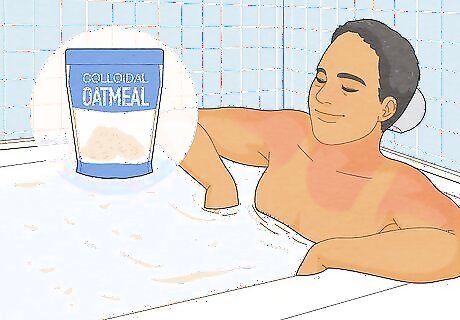
Take a lukewarm colloidal oatmeal bath to soothe itchy skin. Oatmeal moisturizes dry skin and normalizes the skin’s pH, which is often high when it’s dry and itchy. For the best results, use colloidal oatmeal, as it’ll float in the bathwater and increase exposure to your skin. If you don’t have colloidal oatmeal, put ⁄4 c (6.0 fl oz) of uncooked oatmeal in a clean pair of pantyhose, tie it closed, and let it float in the tub with you. Run a lukewarm bath. Avoid hot water, as it will dry out your skin and cause more itching. Add the colloidal oatmeal to the running water. If you’re using a stocking, toss it into the bath. Soak for about 10 minutes. If you feel sticky afterward, rinse with lukewarm water. Take an oatmeal bath up to 3 times a day. Make sure you pat dry with a towel—do not rub. This can cause further irritation to your skin.
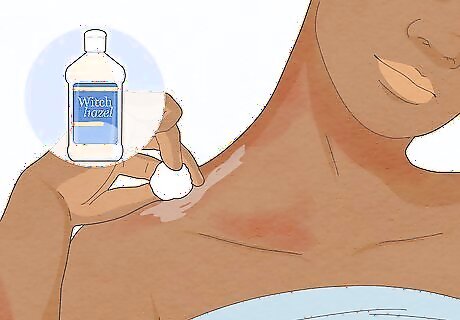
Apply witch hazel to the sunburn to reduce swelling. Witch hazel contains tannins, which can help reduce swelling, pain, and itching. Pour witch hazel on a clean compress (gauze, cotton pad, or washcloth) and gently apply it to the sunburned area. Do this up to 6 times a day to relieve pain and itching. Witch hazel is an excellent natural alternative to hydrocortisone cream.
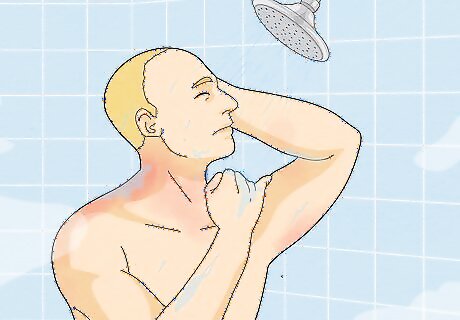
Take a hot shower for severe itching that doesn't respond to treatment. Severe itching may result from Hell’s Itch—an extreme itching that usually starts about 48 hours after a severe sunburn. One way to ease this intense itch is to stand under hot water (essentially a hot shower with no soap or scrubbing); however, it’s always best to consult a doctor before doing this, as hot water can worsen an ordinary sunburn. Doctors recommend continuing with the hot showers until the Hell’s Itch subsides (usually about 2 days). The hot showers work because the brain can only process 1 sensation at a time. The heat of the water activates the pain nerves, which will suppress or shut down the sensation of itching. Hell’s Itch can lead to sleep deprivation, depression, aggressiveness, and suicidal thoughts.
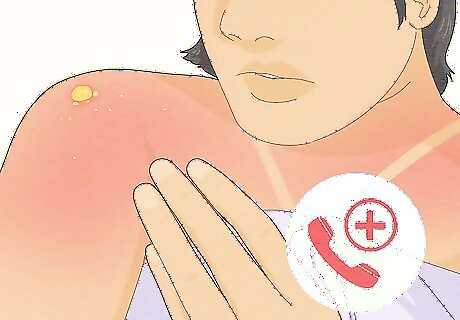
Seek medical advice for severe sunburns that cause blistering or fever. Home remedies can be helpful, but they're usually intended to treat mild burns. If you’re experiencing blistering, dizziness, fever, or possible infection (draining pus, red streaks, increased tenderness), contact your doctor immediately before treating the sunburn yourself. Skin that is waxy and white, very dark brown, or raised and leathery are signs of a third-degree burn. While extremely rare, it is sometimes possible to suffer a burn this severe from the sun. Seek medical help immediately if you believe you have a third-degree burn.
Medications
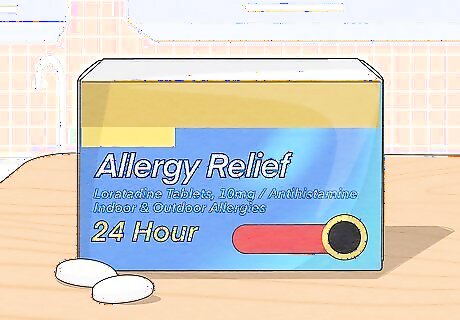
Take an over-the-counter antihistamine to stop itching. Sometimes the itchiness in sunburn is caused by immune system cells releasing histamines and notifying your brain that something’s wrong. An antihistamine suppresses this reaction and temporarily relieves itching and swelling. Simply take your desired medication following the directions on the box. Take a non-drowsy antihistamine, such as loratadine, during the day. Try a fatigue-inducing diphenhydramine, such as Benadryl, at night to help you sleep through the itch. If the itching is severe, talk to your doctor about hydroxyzine: a prescription drug that sedates your central nervous system and acts as an antihistamine.
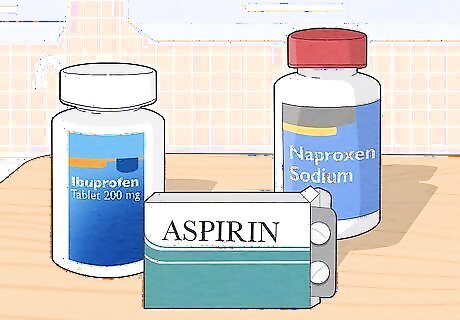
Decrease inflammation by taking a nonsteroidal anti-inflammatory drug (NSAID). Over-the-counter NSAIDs like ibuprofen, naproxen, and aspirin can help reduce swelling and discomfort when you have a sunburn. Follow the directions on the back of your chosen medication’s packaging, and stay on top of the dosing for the first 48 hours after you get burned (or until you feel relief).
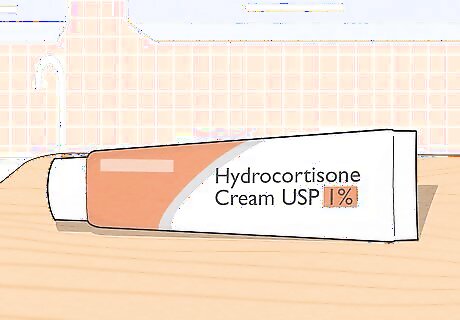
Use 0.5-1% hydrocortisone cream to relieve pain and itching. Hydrocortisone is an over-the-counter steroid cream that helps reduce inflammation, redness, and itching. This medication stops your cells from releasing inflammatory substances, which calms the skin and helps your sunburn heal faster. Apply hydrocortisone to your sunburn 4 times daily, rubbing it into your skin with clean hands. Use hydrocortisone sparingly for no more than 4 or 5 days to avoid becoming immune or addicted to its effects.
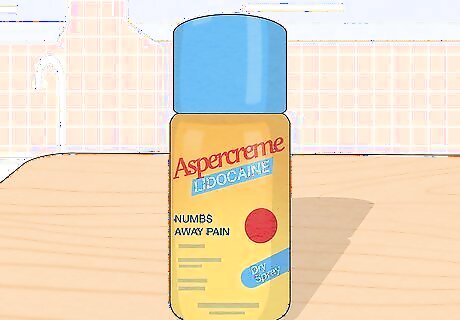
Use a topical anesthetic to numb your skin. Available as sprays, creams, and ointments, a local anesthetic blocks nerve signals in your body. This way, you won’t feel the itching sensation and will have fewer urges to scratch your burn. To use an aerosol spray, shake the can well and hold it 4 to 6 in (10 to 15 cm) from your skin. Spray the sunburn and rub the product in gently. For creams, gels, or ointments, gently rub the cream on dry skin until evenly distributed. Look for brands that include aloe to help soothe your skin even more.
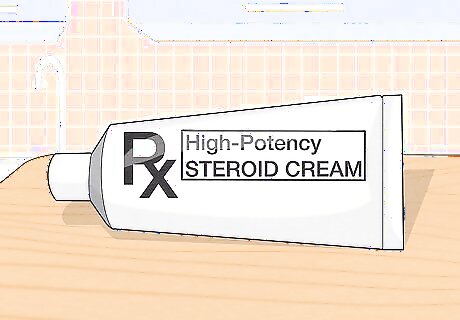
Talk to your doctor about prescribing a high-potency steroid cream. If the itching is so bad you can't concentrate on anything else, your doctor can help with a more aggressive treatment. A high-potency steroid cream can reduce inflammation and calm the itching, especially if you’re experiencing Hell’s Itch. These medications are available by prescription only and can weaken your immune system and cause other serious side effects. Only use them in the most extreme cases.


















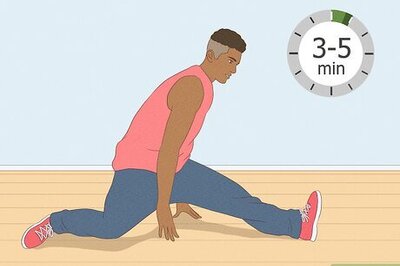

Comments
0 comment